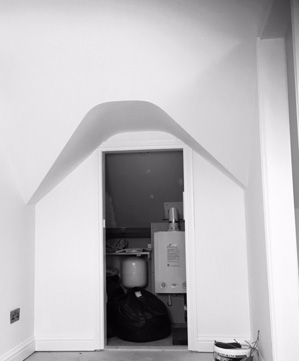

Dry lining is a system for cladding the internal faces of buildings, such as walls and ceilings, allowing them to be painted almost immediately. Moisture resistant plasterboards are treated with wax and can be useful when dry lining bathrooms for example.
Plasterboard can be fixed direct to the internal face of a wall or ceiling, or can be fixed to a secondary framework of metal or timber attached to the internal face. Once the plasterboard is in place, a jointing tape can be applied over the joints between the boards and then the tape and recessed screw or nail heads can be filled over with a jointing compound.
Dry lining is generally faster and easier to install than wet plaster, and generally results in an overall construction that weighs less. Dry-lined walls are easier to change, making buildings more flexible. Dry lining can also be used to increase thermal insulation and to prevent condensation. Additional insulation may be installed behind the plasterboard, and a vapour barrier might also be installed.
Disadvantages of this technique are that dry lining can have less load-carrying capability that traditionally finished walls, which may be a problem for fixing wall-hung cupboards or shelves. It can also be easier to damage.
Plaster ornamental cove is used as a great finish where the wall meets the ceiling. The coving can be simple, or ornate to suit your tastes - we will show you the different types of coving we supply, and advise you on what might work best for your home.
